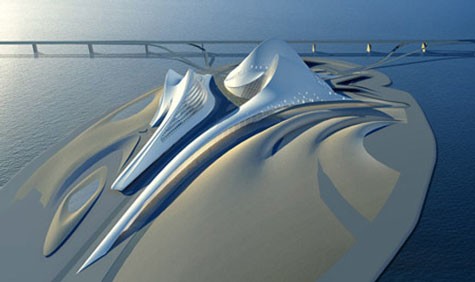
Zaha Hadid’s visualisation for the futuristic Dubai Opera House has her trademark fluid style.
Australian architects are leading the world in architectural visualisations but it’s not necessarily the big firms that are producing the best work, according to a visiting expert.
Smaller firms are most pioneering because they tend to be agile enough to adopt new technologies early, a visiting specialist from Autodesk said.
A strong visualisation can also help architects claim offshore work by effectively bridging cultural barriers, Chris Ruffo, senior design visualisation manager at Autodesk, told Architecture & Design.
“The difference between a good quality image and a poor image, is the difference between winning or losing a job.”
Stephen Blowers, associate director of London firm Dyer, said that one image not only won his firm a job, but a market share, in Russia.
“The recession has made it impossible to get away without doing a visualisation, and that’s changed within the past year,” he said. “To stay ahead of the game, you need to keep broadening your horizons.”
Real-time rendering is going to be a big future trend, as technology from the gaming industry is applied to architecture. Visualisation artists are beginning to take cues from film and video, studying camera moves and techniques in a bid to communicate architects’ visions in the most effective way.
“The biggest technology enabler is what is happening with hardware,” Ruffo said.
“If you look at the computing power behind the games console, those technologies are filtering down into desktop systems. This will enable architects and designers to leverage the advances of the games industry to create a new visualisation for our time.”
Firms should be investing in developing their own instantly recognisable brand of visualisation if they are to harness technology to its greatest force.
“Each image should be like a signature, conveying the culture of that company,” Ruffo said.

